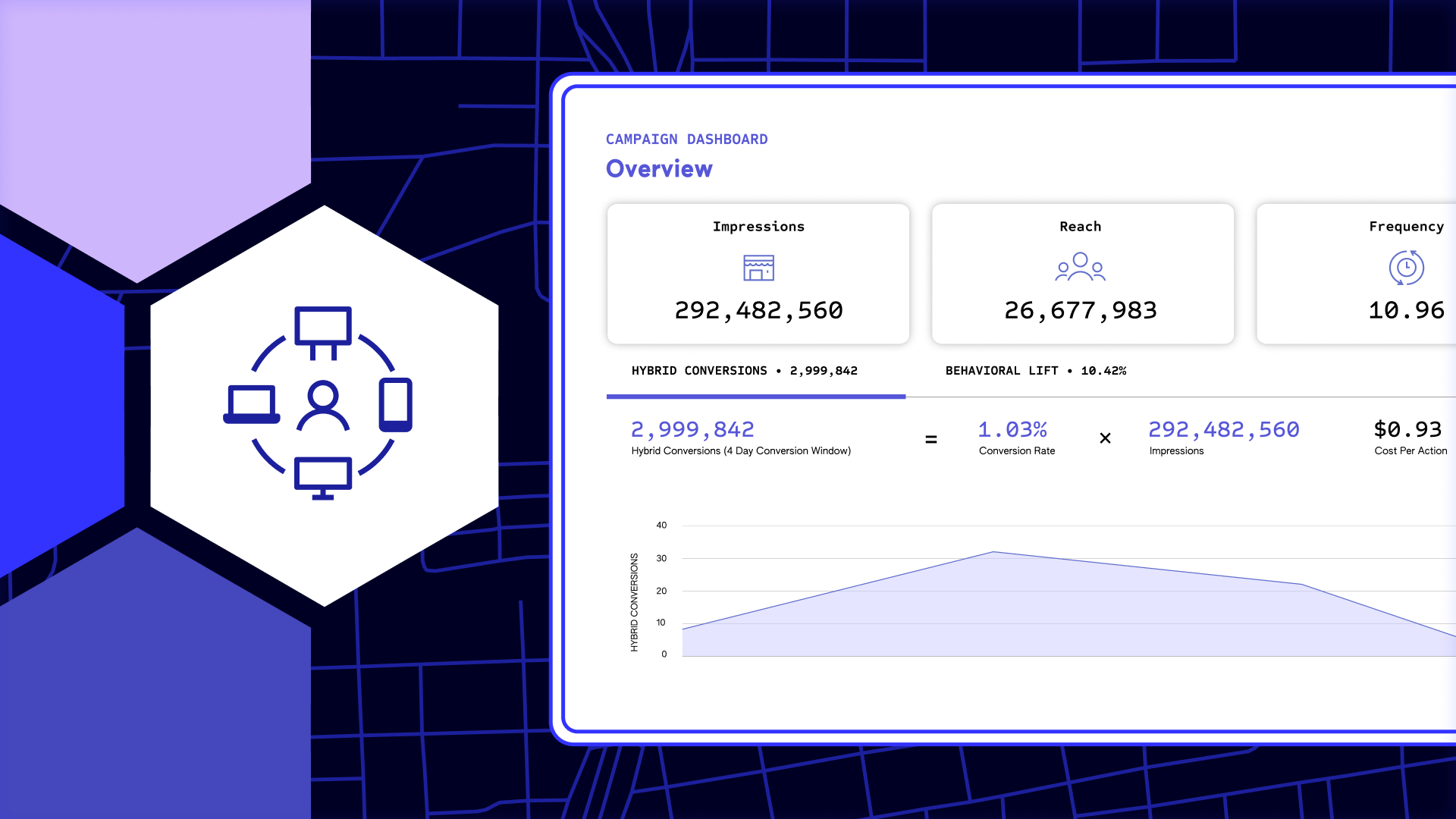COVID-19 is now a worldwide pandemic, and the ultimate impact is still largely unknown. In recent weeks, we’ve shared some of the early effects (part 1 and part 2) of the virus on foot traffic to a variety of places, concentrating on the most affected regions and types of places. We will be updating that foot traffic data on an ongoing basis as the situation continues to evolve in the U.S. Here is the most recent update.
While COVID-19 is influencing people’s actions nationwide, the timing and scale of these behavioral shifts vary by population density and by region. For example, people seem to have distanced themselves socially most and earliest in urban areas and in the West, while rural areas and the Midwest have been slightly slower to adapt. We’ve also noticed trends changing over time since the outbreak began, such as waves of consumers first flocking to warehouse stores, then to grocery stores, and most recently to drug stores.
In the analysis below, we detail the foot traffic patterns we’ve seen to date across major consumer categories. Using our location data, we are committed to continuing to provide information on how behaviors are changing throughout these troubling times.
Our Methodology
We’ve taken a broader view in our analysis this week, looking at the Northeast, South, Midwest and West Census regions, as well as a national view to showcase macro trends. We’ve also compared foot traffic in urban, suburban, and rural areas to assess whether behavioral patterns varied by population density.
We use indexed foot traffic to demonstrate the relative decline in visits to different types of places, where visits on the first day are 100. We analyze data on a rolling 7-day basis to reduce the effects of foot traffic trends influenced by certain days of the week (for example, bars and clubs experience an uptick on Fridays and Saturdays).
So, to explain this in an example, an 81 index to airports for March 6 indicates that foot traffic between February 29 – March 6 (a 7-day rolling period) is 19% lower than the first 7 days of analysis, February 13 – February 19.
We used February 13 – February 19 as the first 7-day period benchmark for analysis because February 19 is when we last estimated foot traffic to be roughly normal for the categories analyzed. You’ll see us reference this period as “the week ending February 19.”
What Does The Latest Data Show?
Consumer behavior has changed significantly since the COVID-19 outbreak began. Below are some of the new trends we’re seeing in the data from last week, through Friday, March 27:
• Enjoying The Outdoors – In last week’s analysis, we showed that foot traffic to gyms declined significantly since the outbreak of COVID-19. We hypothesized that people may be finding new ways to stay fit while still maintaining social distance, such as running or hiking outside. This week, we took a closer look at foot traffic to trails and parks, and verified that visits to both were on the rise since the outbreak began. Visits to trails were up 34% nationally and visits to parks were up 10% nationally from the week ending February 19 to the week ending March 27.
While some of this upward trend may be due to the weather improving, the upticks are more pronounced this year – traffic to trails rose most in the Northeast (up 77%), followed by the Midwest (up 56%), then the South (up 24%) and the West (up 20%) as of March 27. Similarly, visits to parks rose most in the Northeast (up 34%) and the Midwest (up 27%). However, visits to parks were up only 3% in the South and remained flat in the West, perhaps due to park closures and restrictions in states like California.
• Ordering Take Out – While foot traffic to sit-down casual dining restaurants is down more than 73% nationally, visits to fast food restaurants are only down 18% nationally. QSRs may be less impacted by COVID-19 because they offer drive through and take out. Location data verifies that people who are still going to QSRs are spending less time in locations, with 63% of visits lasting less than 15 minutes in the week ending March 27 (versus 57% of visits lasting less than 15 minutes in the week ending February 19).
Furthermore, in a survey* of people who visited QSRs between March 20 and March 24, 91% of respondents said they chose to drive through or take out rather than dining in (68% chose drive through and 23% chose take out). Amongst people who bought take out from a QSR, most placed their order once they arrived (72%), whereas only 28% of respondents ordered in advance.
People are also visiting QSRs closer to home, traveling an average of 4.6 miles from home to a QSR in the week ending March 27, versus. 5.0 miles the week ending February 19. People who are still going to QSRs will likely continue to do so – 3/4 of QSR visitors surveyed plan to visit again in the next month.
• Spending Less Time On The Road – After initial upticks in foot traffic, gas stations like Exxon and BP are now showing slight declines, down 7-8% nationally from the week ending February 19 to the week ending March 27. Visits were down most in the West (down 13%) and least in the South (down 4%). This may indicate that people are truly ‘hunkering down,’ requiring fewer trips to refuel as they become less mobile.
How Does Consumer Behavior Vary Regionally?
• Urbanites Lead The Way – Foot traffic to crowded places declined earlier and more dramatically in urban areas, and later and less extensively in rural areas. For example, foot traffic to bars was down 67% in urban areas as of March 27, but only down 43% in rural areas. Visits to bars started declining in earnest in urban areas around March 11, but nightlife visits did not start declining in rural areas until around March 17.
Similarly, visits to fast food restaurants were down 23% in urban areas as of March 27, but QSR visits were only down 13% in rural areas. Visits to fast food restaurants started declining in earnest in urban areas around March 13-14, but did not start declining in rural areas until around March 18. Likewise, foot traffic to gyms was also down 65% in urban areas as of March 27, but gym visits were only down 59% in rural areas. Visits to gyms started declining in urban areas around March 8, but did not start declining in rural areas until around March 11.
As the virus spreads from major U.S. cities to less densely populated areas, we’ll continue to keep a close eye on the behavioral shifts in different environments.
• Western States Responded First – Foot traffic to crowded places declined earlier and more dramatically in the West than in other Census regions. The Midwest in particular has shown later and smaller behavioral shifts since the COVID-19 outbreak began. For example, foot traffic to bars was down 64% in the West as of March 27, but was only down 52% in the Midwest. Visits to bars started declining in the West as early as February 28, but nightlife visits did not start declining in earnest in the Midwest until around March 20.
Similarly, foot traffic to clothing stores was down 81% in the West as of March 27, but was only down 74% in the Midwest. Visits to clothing stores started declining in the West as early as February 28, but clothing store traffic did not start declining in the Midwest until around March 9. This trend is evident across a variety of places, and is illustrated in more detail below.
Here are updates on the trends we shared last week:
1. Cancelling Travel Plans – Location data verifies that people are traveling significantly less since the COVID-19 outbreak began. Airport visits have declined dramatically since the outbreak of COVID-19, down 66% from the week ending February 19 to the week ending March 27. Foot traffic to hotels was also down 61% nationally from the week ending February 19 to the week ending March 27 as people stayed at home. Airport visits were down most in the Northeast, while hotel visits were down most in the West as of March 27.
2. Stocking Up On Supplies – Foot traffic to warehouse stores like Costco and Sam’s Club spiked early on following the outbreak of COVID-19 as people bought supplies in bulk. However, warehouse store traffic has since returned to roughly normal levels, up only 3% from the week ending February 19 to the week ending March 27.
After stocking up on supplies for a few weeks, people started going to grocery stores more to replenish their food. When Foursquare surveyed people who visited a grocery store March 20 through March 24, 76% of respondents said that they visited the store to pick up a few items they were out of, whereas only 24% were “stocking up for the next few weeks.” When asked what types of items they intended to purchase, grocery store visitors in this time frame showed the highest purchase intent for fresh dairy and produce. We’ve seen foot traffic to grocery stores gradually decline since March 20, up only 13% nationally from the week ending February 19 to the week ending March 27. Visits to grocery stores are actually up less in the West now compared to other regions, perhaps due to people ‘sheltering in place.’
As of March 27, the retailers with the largest relative upticks in foot traffic were drug stores. Visits to drug stores like CVS and Walgreens were up 28% nationally from the week ending February 19 to the week ending March 27. This may indicate that people have turned their attention to prescriptions, personal care items, over-the-counter medications and other necessities. While visits to drug stores rose first in the West, traffic is now up the most relatively in the South, up 51% from the week ending February 19 to the week ending March 27.
3. Dining & Drinking At Home – As mentioned above, foot traffic to grocery stores is up 13% nationally from the week ending February 19 to the week ending March 27. Meanwhile, both QSRs and casual dining chains saw a steep decline in visits around March 13-14 when President Trump declared a state of emergency. This drop also coincided with an uptick in visits to grocery stores, perhaps indicating that at this point, people began making a concerted effort to dine at home instead of going out to eat. Nationally, foot traffic to casual dining chains is down 73% from the week ending February 19 to the week ending March 27, and foot traffic to QSRs is down 18%.
While people were slower to stop visiting nightlife spots compared to other types of places, visits to bars did eventually decline, down 56% nationally by the week ending March 27. Meanwhile, liquor stores were deemed ‘essential’ and foot traffic rose as people prepared to imbibe at home instead. However, liquor store visits seem to have peaked around March 20 and since declined, only up 5% nationally from the week ending February 19 to the week ending March 27. This may indicate that people stocked up on enough drinks for the time being, and began ‘hunkering down’ at home.
4. Generally Staying In
• Working From Home – Despite an initial uptick in foot traffic following President’s Day weekend, foot traffic to offices has declined significantly since around February 24. Office visits are down 37% nationally from the week ending February 19 to the week ending March 20, as employees opt to or are advised to work remotely.
• Fixing Up The House – Foot traffic to hardware stores like The Home Depot and Lowe’s are up 27% nationally from the week ending February 19 to the week ending March 27, with smaller declines in the West.
• Finding New Fitness Routines – Visits to gyms nationally are down 64% from the week ending February 19 to the week ending March 27 as people find alternative, socially distant workouts. Visits are down most in the Midwest and Northeast, and slightly less in the South and West.
• Shopping Online Instead of In-Store – People have been steering clear of malls since the outbreak of COVID-19, with visits down 61% nationally from the week ending February 13 to the week ending March 27. Taking a closer look at apparel in particular, we see visits to brick and mortar clothing stores were down 72% from the week ending February 19 to the week ending March 27.
• Streaming Movies Instead Of Watching In Theaters – Compared to other types of places, movie theaters were one of the first types of places to see significant declines in foot traffic. Visits to movie theaters were down 75% nationally from the week ending February 19 to the week ending March 27. Theater visits were down most in the Northeast (down 79%) and least in the Midwest (down 75%).
• Banking Online – Despite initial upticks, foot traffic to banks was down 13% nationally as of March 27, as people opt to stay at home. Visits were down most in the West (down 16%) and least in the Midwest (down 11%).
• On The Road Less – After initial upticks in foot traffic, gas stations like Exxon and BP are now showing slight declines, down 7-8% nationally from the week ending February 19 to the week ending March 27. Visits were down most in the West (down 13%) and least in the South (down 4%).
We’ll be monitoring foot traffic patterns closely over the coming weeks, so check back for more updates.
Editor’s Note: Foursquare analyzes foot traffic patterns from more than 13 million Americans that make up our always-on panel. All data is either anonymized, pseudonymized or aggregated, and is normalized against U.S. Census data to remove age, gender and geographical bias. For this report, we looked at data from 2020 year to date.
The charts above illustrate indexed foot traffic to various locations. We’ve also used rolling 7 day averages to account for fluctuations in foot traffic by day of the week.
Urban, suburban, and rural areas were defined by 2010 U.S. Census data on population density by zip code tabulation area (ZCTA). We used the following definitions: Urban: 3,000+ persons per square mile; Suburban: 1,000 ‐ 3,000 persons per square mile; Rural: less than 1,000 persons per square mile.
Casual dining restaurants analyzed include casual dining chains in National Restaurant News’ Top 500 Chains.
*Survey data mentioned above is derived from a survey of consumers in Foursquare’s always-on panel, delivered via owned and operated mobile apps (Panel App, Frequent Flyer and Give 2 Charity) from March 20-24, 2020.



